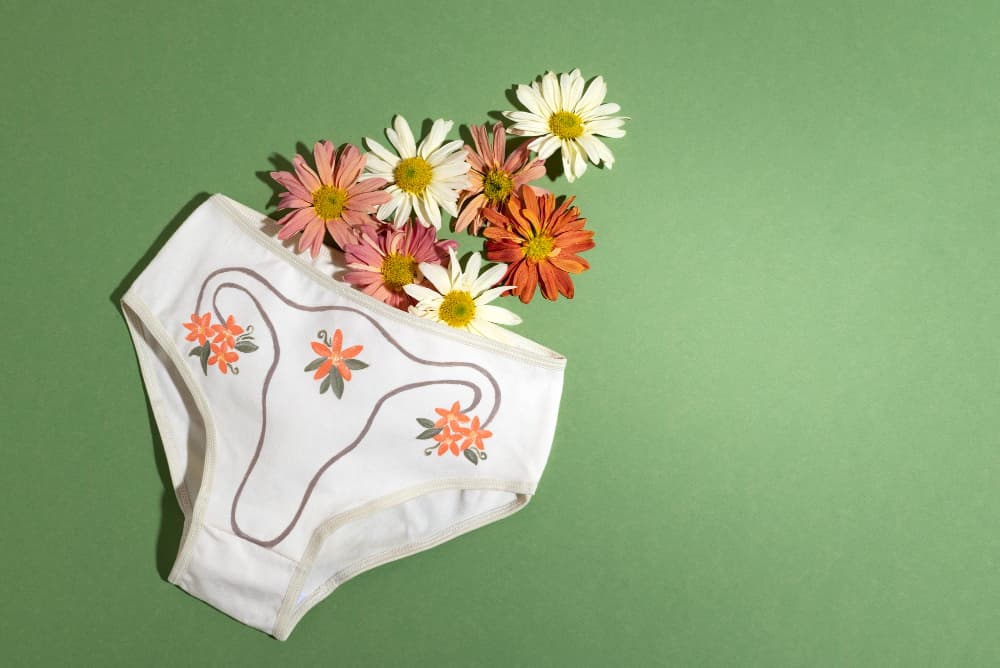
From Field to Fabric: The Journey of 100% Organic Cotton
Introduction to Organic Cotton
In a world increasingly focused on sustainability, 100% organic cotton clothing has gained immense popularity. Unlike conventional cotton, which often involves the use of harmful chemicals and pesticides, organic cotton is cultivated using natural methods that promote environmental health and the well-being of farmers. This blog explores the journey of organic cotton from its origins in the field to its transformation into fabric. We will delve into its environmental benefits, health implications, and the importance of choosing organic materials in our daily lives.
The growing awareness of environmental issues has led consumers to seek more sustainable clothing options. This shift in consumer behavior has pushed brands to adopt ethical practices and source organic cotton. As we unpack the journey of organic cotton, we'll also highlight how this movement contributes to a healthier planet and ethical fashion.
1. The Foundations of Organic Cotton Farming
What Makes Cotton Organic?
Organic cotton is cultivated without synthetic pesticides, fertilizers, or genetically modified organisms (GMOs). Instead, farmers rely on natural methods, such as crop rotation, cover cropping, and composting, to enrich the soil and manage pests. By implementing these practices, organic farmers foster a balanced ecosystem, reducing the reliance on chemical inputs.
For instance, a farmer might plant a cover crop, such as clover, during the off-season. This not only adds nutrients to the soil but also attracts beneficial insects that help control pest populations. The result is a healthier crop that thrives in its natural environment, producing high-quality cotton fibers.
The Role of Certifications
Certifications like the Global Organic Textile Standard (GOTS) ensure that organic cotton meets strict environmental and social criteria. These certifications validate that the cotton is grown and processed sustainably, providing peace of mind for consumers. Brands that carry GOTS certification must adhere to guidelines regarding environmental management, social responsibility, and chemical use throughout the supply chain.
Choosing products with reputable certifications empowers consumers to make informed decisions. When a brand showcases its GOTS certification, it signifies a commitment to ethical practices, which can influence consumer loyalty and trust.
2. Sustainable Agricultural Practices
Soil Health and Biodiversity
Organic farming practices enhance soil fertility and promote biodiversity. By avoiding chemical inputs, organic farmers maintain healthier ecosystems that support various plant and animal species. A diverse agricultural environment is less susceptible to pests and diseases, reducing the need for chemical interventions.
Moreover, healthy soil is crucial for sustainable farming. Organic farmers use techniques such as composting and mulching to improve soil structure and fertility. This not only enhances cotton yield but also ensures the long-term health of the land. For example, farmers who practice agroforestry might integrate trees into their cotton fields, which provides shade and habitat for wildlife, while also preventing soil erosion.
Water Conservation Techniques
Organic cotton farming typically uses up to 91% less water than conventional cotton farming. Methods such as rain-fed irrigation and mulching help conserve water resources, making organic cotton a more sustainable choice. Rain-fed irrigation relies on natural rainfall, reducing the dependency on groundwater sources, which are often over-exploited in conventional farming.
Additionally, organic farming techniques promote soil moisture retention. Mulching, the practice of covering the soil with organic material, helps maintain soil temperature and moisture levels. This practice not only conserves water but also reduces the frequency of irrigation, contributing to a more sustainable water management system.
3. The Harvesting Process
Hand vs. Machine Harvesting
Organic cotton is often harvested by hand to prevent damage to the fibers. This labor-intensive method ensures that the cotton is picked at its peak quality, enhancing the final product. Hand harvesting allows for selective picking, where only the ripe bolls are collected, ensuring the cotton’s quality remains high.
In contrast, machine harvesting can lead to mixed-quality cotton, as it often collects both ripe and unripe bolls. This affects the integrity of the fibers and can result in inferior fabric quality. The commitment to hand harvesting also supports local communities by providing employment opportunities, contributing to the socio-economic development of farming regions.
Ginning: Preparing the Cotton
After harvesting, the cotton goes through the ginning process, where seeds are separated from the fibers. This step is crucial in preparing the cotton for spinning into yarn, ensuring a high-quality product. Ginning involves careful handling to preserve the integrity of the fibers.
In many regions, small-scale ginning operations are prevalent, allowing farmers to retain more control over the quality of their cotton. These operations often use traditional methods that focus on minimizing waste and maximizing fiber quality. This approach not only supports local economies but also ensures that the final product aligns with organic standards.
4. From Fiber to Yarn: Processing Organic Cotton
Cleaning and Carding
The ginned cotton fibers undergo cleaning and carding, a process that straightens and aligns the fibers for spinning. This ensures a consistent and smooth yarn, essential for high-quality fabric production. During cleaning, any remaining impurities or foreign materials are removed, preparing the fibers for the next stage.
Carding is a critical process in which fibers are combed and aligned to create a continuous web. This web of fibers is then gathered and formed into roving, which is the precursor to yarn. The quality of the carding process significantly impacts the final yarn’s strength and texture, making it a vital step in organic cotton processing.
Spinning Techniques
The cleaned fibers are then spun into yarn using various techniques, depending on the desired fabric characteristics. Organic cotton yarn is known for its softness and durability, making it suitable for a wide range of clothing. Different spinning methods, such as ring spinning or open-end spinning, can produce yarn with varying textures and strengths.
For instance, ring-spun yarn tends to be finer and more durable, ideal for high-quality fabrics like denim or t-shirts, while open-end spun yarn may be thicker and more suitable for heavier applications like towels. The choice of spinning technique can greatly influence the performance and feel of the final product.
5. Weaving and Knitting: Transforming Yarn into Fabric
Weaving vs. Knitting
Organic cotton yarn can be woven or knitted into fabric. Weaving typically produces stronger, more structured textiles, while knitting results in softer, stretchier materials ideal for t-shirts and activewear. Each technique has its unique advantages, depending on the end use of the fabric.
Weaving involves interlacing yarns at right angles, creating a stable fabric that is often more durable and resistant to wear. Common woven fabrics include canvas and denim. On the other hand, knitting involves creating loops with yarn, resulting in a fabric with stretch and flexibility, commonly used for t-shirts, leggings, and other activewear.
Innovations in Fabric Production
Many brands are exploring innovative fabric production methods, including using low-impact dyes and eco-friendly processes, to further enhance the sustainability of organic cotton textiles. For example, some manufacturers are adopting digital printing technologies that reduce water usage and chemical waste compared to traditional dyeing methods.
Additionally, innovations in fabric blends are emerging, where organic cotton is combined with other sustainable fibers like Tencel or hemp, resulting in unique textiles that offer both functionality and eco-friendliness. These innovations reflect the industry's commitment to sustainability while catering to evolving consumer preferences.
6. The Benefits of 100% Organic Cotton Clothing
Health and Comfort for Wearers
One of the main advantages of organic cotton clothing is its hypoallergenic nature, making it suitable for sensitive skin. The natural fibers allow for breathability, reducing the risk of irritation and discomfort. This is particularly beneficial for infants and individuals with skin conditions, as organic cotton is free from harmful chemicals that can exacerbate skin sensitivities.
Furthermore, organic cotton garments often feel softer against the skin compared to conventional cotton, enhancing overall comfort. Many consumers report that they prefer the feel of organic cotton, which adds to its appeal in the clothing market.
Environmental Impact: A Greener Choice
Choosing 100% organic cotton clothing helps reduce the environmental impact associated with conventional cotton farming. From lower water usage to reduced pesticide runoff, organic cotton promotes a healthier planet. By opting for organic cotton, consumers actively participate in a more sustainable fashion industry, supporting practices that preserve natural resources.
Moreover, organic cotton farming contributes to climate change mitigation. Healthy soils rich in organic matter sequester carbon, helping to offset greenhouse gas emissions. This climate-friendly aspect of organic cotton is becoming increasingly relevant as consumers seek to reduce their carbon footprints.
7. Supporting Ethical and Sustainable Brands
Leading Brands Committed to Organic Cotton
Several brands prioritize organic cotton in their collections, including Patagonia, Pact, and Eileen Fisher. These companies are dedicated to sustainable practices and ethical labor conditions, ensuring that their products are responsibly made. By choosing to source organic cotton, these brands are taking a stand against environmental degradation and promoting fair labor practices.
Patagonia, for example, has been a pioneer in sustainable fashion, incorporating organic cotton into its product lines and advocating for environmental awareness. Their commitment to transparency and sustainability sets a benchmark for other brands in the industry.
The Importance of Conscious Consumerism
By supporting brands that use organic cotton, consumers can contribute to a more sustainable fashion industry. Making informed choices fosters a demand for ethical practices, driving positive change in the marketplace. Conscious consumerism empowers individuals to align their purchasing habits with their values, advocating for a more equitable and environmentally responsible world.
Additionally, consumers can engage in conversations about sustainable fashion within their communities. By sharing knowledge about organic cotton and its benefits, individuals can inspire others to make conscious choices, amplifying the movement toward ethical fashion.
Conclusion
The journey of 100% organic cotton from field to fabric illustrates the importance of sustainability in the fashion industry. By choosing organic cotton clothing, consumers not only enjoy the numerous health benefits but also support environmentally friendly practices and ethical labor conditions. The growing demand for organic cotton reflects a larger shift toward sustainability, and as awareness grows, the transition continues to pave the way for a more responsible and equitable future in fashion.
As we move forward, it is crucial for consumers to remain informed and engaged in the conversation around sustainable materials. By championing organic cotton and supporting brands committed to ethical practices, we can collectively contribute to a healthier planet and a more sustainable fashion industry. The choices we make today will shape the future of fashion, ensuring that it is not only stylish but also mindful of our environment and the communities that bring these garments to life.
















